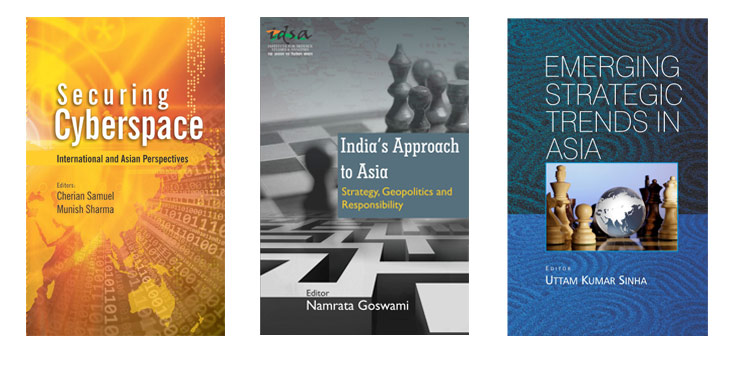You are here
9th Asian Security Conference
Session IV: Regionalism and Multilateralism in Southeast Asia
Rapporteur Report
by
Alok Rashmi Mukhopadhyay and Sukanya Podder
February 9, 2007
Rajiv Kumar, Director & Chief Executive of Indian Council for Research on International Economic Relations (ICRIER), chaired this session. B. S. Malik, in his opening presentation on “Regionalism and Multilateralism in South East Asia” highlighted the monumental shift taking place in the world economy today. Making a comparative analysis amongst different economic regions in the world, he brought out that while China and India make up 41 per cent of the world population, their total economic performance is a mere 6 per cent. States are becoming more integrated in an era of global capitalism, yet the local is as important as the global. Hence regional co-operation and multilateral ventures are most welcome. In the Southeast Asian region the East Asia Summit holds much promise for greater multilateralism. Also, the significance of BIMSTEC as a bridge between SAARC and ASEAN needs to be underlined. In terms of reform of the Bretton Woods institutions, it is hoped that collective representation of India, China and Brazil will help garner the support of effective power in changing global dynamics. Once connectivity increases, Malik concluded, a lot of security problems get resolved.
GVC Naidu, in his paper “India and East Asian Multilateral Co-operation,” characterised regional multilateralism in East Asia during the post-Cold War era as security and economic in nature. He also gave a brief description of the history of various multilateral initiatives. As far as Indian foreign policy is concerned, Naidu underscored that India has always been sceptical about regional multilateralism and a believer in the balance of power approach.
In response to Naidu’s paper, Kishore Mahbubani remarked that India is still very sceptical about ASEAN whereas the latter is very important for China. Madhu Bhalla observed that ASEAN is a community-building exercise and India should participate in it. Virendra Gupta stated that India’s foreign policy is a combination of ‘realism’ and ‘multilateralism’. Naidu responded that India is more sceptical about ASEAN than China. But regarding foreign investment, democratic India cannot offer more to the investors than China. He added that community building is a far-fetched idea considering practical realities like borders and currencies.
Tsutomu Kikochi, in his paper “ASEAN and East Asian Regionalism,” presented the background of East Asian regionalism, problems the idea has faced and ASEAN’s role in solving them. He alluded to certain tentative assumptions in terms of ASEAN’s role in East Asian relations. ASEAN can be a stabilising factor, forging a unified security community which will make war unlikely among the region’s countries. ASEAN is, in a sense, being forced to play this role by the prevailing environment in the region. Therefore, the structural factor plays a key role in consolidating a broader East Asian community. Kikochi concluded that there is a revision of normative preferences will be useful in this respect. ASEAN has played a leading role for East Asian co-operation, and there is room for great powers to play a role in this respect.
Songnavong Bounnheaung, in his paper “ASEAN and East Asian Regionalism: Laos Perspective,” presented the evolution of regionalism in the region and stressed upon sub-regional concepts.
Eunsook Chung made a comparative analysis between the ASEAN Regional Forum and the Organisation for Security and Co-operation in Europe (OSCE).
Dr. Nagesh Kumar in his paper “India and Multilateralism in South East Asia” highlighted that the 2003 Bali Summit saw the genesis of India’s open commitment to the Asian Economic Community idea. India sees engagement with Japan and China over time as beneficial to their mutual interests for a broader Asian regionalism. However, he underscored that regionalism needs to be looked at more critically. In fact 56 per cent of Asia’s trade is with itself. Emerging patterns in specialization of Asian economies need to be harnessed through greater regional co-operation for mutual advantage. This must provide ways to solve global imbalances including some sub-regional attempts by ASEAN, ASEAN Economic community, SAARC and BIMSTEC. Kumar assessed that the future lies in trying to create a framework for FTAs between ASEAN and dialogue partners, prominently JACIK and ASEAN+3 and ASEAN+India.
Chap Sotharith in his paper “ASEAN and East Asian Regionalism” underscored that East Asian Regionalism draws upon both security and political motivations. The East Asian Community is still in process and more countries are interested to participate and sign a treaty of Amity and Co-operation. Without undermining the alliance with the US, the East Asian Community still has a long way to go, and hence it wishes to retain strategic partners and observers which would be impossible without economic integration and trade. But the community is also likely to be influenced by China-Japan rivalry.
Nguyen Ngoc Giao, in his paper, “China and South East Asia: Vietnam’s Perspective,” predicted that ASEAN would become a more cohesive bloc in the years to come but simultaneously there would be regional rivalries.
In his concluding remarks, Rajiv Kumar brought forward four pertinent issues: (i) global multilateralism and the Bretton Woods system, (ii) the sustainability of economic growth in the Southeast Asian region, (iii) the capability of ASEAN for further economic integration and, (iv) deepening integration into ASEAN’s own region.
The open discussion saw Madhu Bhalla enquiring about other Southeast Asian regional organisations, while Rajiv Sikri pointed out the need for integration with the neighbourhood prior to integration with the global system and gave the example of India, Bangladesh and Sri Lanka. Another point that came up during the discussion was the differing Chinese and Indian approaches towards ASEAN — while India considers ASEAN as one of several multilateral fora, China looks at ASEAN as the end of a regional integration process.

